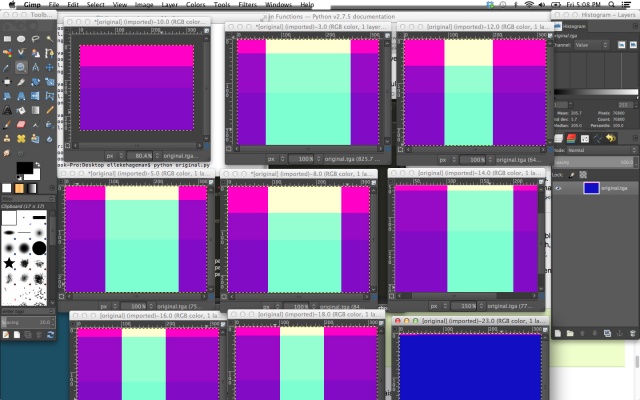User:Elleke Hageman/Python: Sound and Image: Difference between revisions
No edit summary |
No edit summary |
||
| Line 2: | Line 2: | ||
'''Sound #1''' | '''Sound #1''' | ||
<source lang = "python"/> | <source lang="python"/> | ||
import wave, struct | import wave, struct | ||
| Line 40: | Line 40: | ||
w.close() | w.close() | ||
<source | </source> | ||
Revision as of 11:38, 14 October 2013
Sound #1
import wave, struct
filename = "sound.wav" nframes=0 nchannels=1 sampwidth=1 # in bytes so 2=16bit, 1=8bit framerate=44100 bufsize=2048
w = wave.open(filename, 'w') w.setparams((nchannels, sampwidth, framerate, nframes, 'NONE', 'not compressed'))
max_amplitude = float(int((2 ** (sampwidth * 8)) / 2) - 1)
- split the samples into chunks (to reduce memory consumption and improve performance)
- for chunk in grouper(bufsize, samples):
- frames = .join(.join(struct.pack('h', int(max_amplitude * sample)) for sample in channels) for channels in chunk if channels is not None)
- w.writeframesraw(frames)
freq = 15000
- this means that FREQ times a second, we need to complete a cycle
- there are FRAMERATE samples per second
- so FRAMERATE / FREQ = CYCLE LENGTH
cycle = framerate / freq
data =
for i in range(10):
for x in range(20000):
data += struct.pack('h', int(0.4 * max_amplitude))
for x in range(1000):
data += struct.pack('h', int(-0.8 * max_amplitude))
w.writeframesraw(data)
w.close()
</source>

